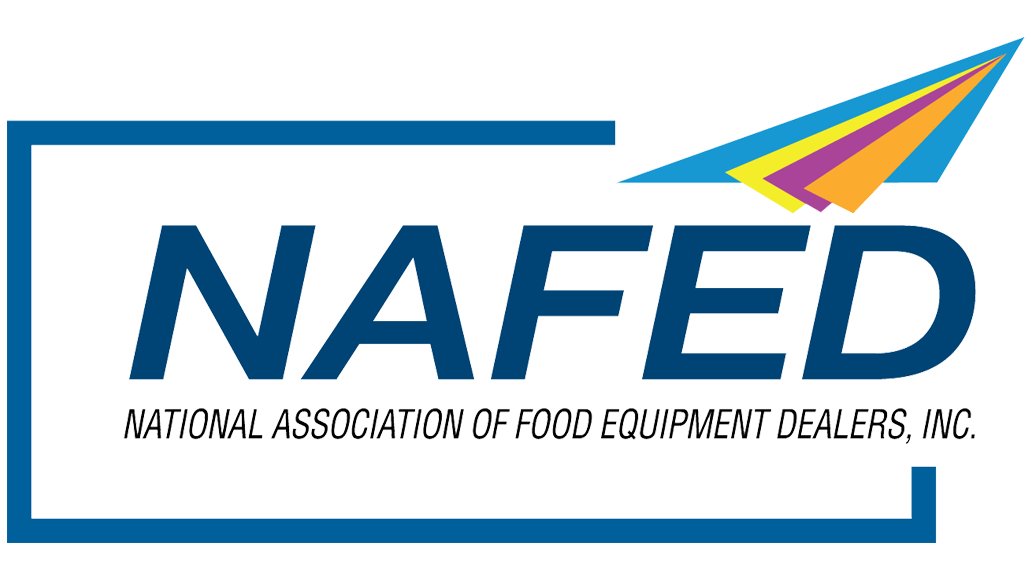Kitchen Equipment Maintenance Guide for Restaurants
Kitchen Equipment
Maintenance Guide for Restaurants
Kitchen equipment is the lifeblood of your business, and any unscheduled downtime can be detrimental to your bottom line. Preventive maintenance of your equipment translates into big savings for your restaurant in the long run.
You can avoid many equipment malfunctions with this general checklist:
Commercial Refrigerators
When a refrigerator, walk-in freezer or chiller malfunctions, it impacts the quality of your food inventory almost immediately. Fortunately, there are several regular equipment checks that can prevent a refrigeration unit from breaking down unexpectedly.
Refrigeration Self-Checks
Your team should find these daily tasks easy enough to manage on their own:
- Make sure that the temperature is not set lower than recommended. At the same time, check that the unit is not set to auto-defrost more regularly than it needs to. A refrigeration unit must work twice as hard to keep food cool when the setting is too low or the unit defrosts too often. Extra pressure on the unit can shorten its lifespan and increase the frequency of repairs.
- Check that the unit allows enough air flow to the cooling mechanisms. Blocked air flow puts added strain on the unit, increasing power consumption and the risk of overheating.
- Always keep the inside of the unit clean to prevent the buildup of gunk that can clog and damage working parts.
- Clean all ice makers by disassembling them and removing any trace of dirt or mold. You can do this monthly rather than daily.
Annual Refrigeration Checks
You can get the most out of bi-annual or annual checks if a certified refrigeration technician carries them out:
- Test and calibrate the thermometers to make sure the gauge reflects the actual temperature and that equipment still complies with health regulations.
- Check for air leaks around all seals, hinges, gaskets and latches. Any part that compromises the airtight barrier requires repair or replacement.
- Inspect the condensing and evaporator coils and remove any dirt and grime. A buildup hinders the flow of heat through the coils, which leads to an inefficient and labored coil.
- Remove any dirt and grease from the fan blades. Dirty blades increase resistance and slow down the motor.
- Check the compressor and fan motor for any signs of fault. Fix minor issues before they become worse.
- Inspect all electrical connections and fix all loose wiring. Loose wires can cause equipment failure, and they're a safety hazard.
- Check your refrigerant levels to make sure there are no leaks and that the levels are still within operational requirements.
- Replace all parts that show signs of degradation.
Commercial refrigerator parts can save you a lot by reducing the risk of big, expensive repairs caused by small problems left to fester. Perform regular checks to catch a problem in its early stages.
Commercial Ovens
Maintaining the working health of your commercial oven is as critical as any other kitchen maintenance. There are many components of an oven that need attention:
- Check that the oven door seal is airtight. Heat escapes from a loose seal causing cooking and heat inefficiencies. For a business, this means that your cooking time increases, the heat diffuses and heating costs rise. It also decreases the lifespan of your oven.
- Check the fan hinges on convection and combination ovens. They need to be tight and adequately oiled.
- Regularly empty and de-lime the steamer on your combination ovens.
Protect Your Oven by Cleaning
A clean oven performs better and lasts longer than a dirty one. You can avoid many performance issues if you schedule regular cleaning sessions.
- Clean the oven interior thoroughly at least once a day. This is in addition to cleaning any spills immediately after they happen.
- Clean spills immediately before the food residue becomes baked on. Leftover crumbs and food residue continue to cook as you use the oven. The result is flavor contamination and eventually smoke release, which not only affects the flavor of your food but also negatively impacts the long-term performance of the unit.
- All oven racks, regardless of the type of oven, require thorough cleaning every day.
- Do a deep clean at least once a month to get rid of any food particles that might have been missed during daily cleanings. The owner's manual describes the right way to deep clean your unit.
- Schedule a weekly or monthly manual deep clean for self-cleaning ovens to complement the daily automated self-cleanings.
Recalibrate for Long Life
All units need recalibration at some point.
Recalibrate the thermostat because your oven may become inefficient due to a poorly calibrated thermostat. Use an internal oven thermometer to compare the actual temperature to the thermostat reading. If there is a difference in the readings, calibrate or replace your thermostat.
You'll not only need to check the calibration of the thermostat but also the performance of any preset programs, which may need recalibration over time.
Oven replacement parts are generally easy to install, but a certified technician can replace any components for you. There are, of course, parts that you can order or replace yourself, such as spare oven knobs or a temperature dial. There's no need to call in the big guns to replace these guys.
Commercial Stand Mixers
Always maintain a commercial stand mixer according to the service instructions for the particular make and model that you own. Let's use maintenance on a 60 quart mixer for illustration purposes.
While it's possible for some mixers to last a lifetime, it's only realistic to accept that serviceable parts will need replacement eventually. It's when we take good care of the mixer that we fully benefit from its potential longevity.
Here are some maintenance checks that can help you extend the life of individual parts and keep your mixer in tip-top shape for longer:
- Wipe down all parts that are prone to gunk buildup. Don't forget the auxiliary attachment ports, timer knob and back rails, which are so easy to overlook.
- Dry all the washed parts thoroughly to prevent condensation that could cause rust to form.
- Perform a lubricant check once a month. Lubricants prolong the life of parts by displacing the heat and minimizing its impact. Manufacturers recommend that you lubricate bowl clamps twice a year and bowl lift side rails more often than that.
- Replace any seal that shows evidence of a leak. Leaks are commonly evident around the auxiliary attachment hub and planetary assembly.
- Deep clean the fan and protective grid around the motor. It very easily becomes blocked and clogged with flour or other ingredients, which can cause the motor to overheat.
- Schedule regular intervals to open and clean out the underside of the planetary assembly. While you're in there, check for lubricant leaks or moisture, and make sure that the gears get appropriate amounts of grease. Unwanted rust can build up quickly if not kept in check.
- Inspect all safety features at least once a month or sooner if you suspect a problem. Those to look out for include the power cord, wire safety cage and plastic bowl guides. It is cheaper to replace a part than to deal with unit loss or team member injury.
Remember to unplug the power cord before beginning any cleaning or maintenance tasks. Tie a cloth or packet around the plug to make it obvious that it is out of commission. This may stop colleagues from innocently plugging the unit back in if you step away from the cleaning job for a moment.
Commercial Deep Fryers
Did you know that a poorly maintained deep fryer is the biggest reason why fried-food often tastes bad? Poor maintenance of the machine or its oil has a direct impact on your customer satisfaction levels.
Deep Fryer Self-Maintenance
Use the correct commercial fryer cleaning brush designed for your type of unit to get as thorough a clean as possible.
Over and above your daily cleaning routine, you should deep clean your fry pot at least every three to six months. Drain the fryer of all oil and fill it with water. Bring the water to a safe simmer and carefully scrub out the vat using a bristle brush. Then, let the water simmer for an hour, and clean and dry the vat completely before refilling it with fresh oil.
Use this downtime as an opportunity to brush and clean the heating element too. A clean element transfers heat more evenly, which helps it last longer. Check that there is no deterioration or damage to the fry pot that could cause leaks.
Deep Fryer Annual Service
Have a technician check all the deep fryer parts annually for wear and tear deterioration. Parts for special inspection include gas valves, burners, temperature and high-limit probes, mounting hardware and many others. The technician should:
- Inspect the heating element, thermostat and control panel. Faulty parts could lead to oil overheating, which may cause a fire.
- Inspect the cabinet on all sides for oil migration and oil build up. The presence of either may be an indication that the cabinet needs repair.
- Check the flue opening for any obstruction, which is commonly caused by oil or shortening that has accumulated and then solidified.
- Verify that all the gas connections are tight and that there are no leaks.
- Inspect the more complex wiring and components that need a qualified eye for evaluation. This inspection ensures that parts maintain tight connections and remain in good working condition.
- Check that parts directly involved in heat transfer are free from oil build-up and debris that could become a fire hazard when exposed to heat.
- Make sure that safety features, such as reset switches and drain safety switches, are functioning properly.
While it's fine for your team to replace basic, user-friendly parts, it's best to leave the more technical repairs up to the experts.
Commercial Stoves, Ranges, Griddles and More
Daily cleaning improves the performance of your commercial stove top or range and helps reduce early deterioration and the need for unnecessary repairs.
- Clean up messes as soon as possible. Clean any exterior parts as soon as the spill happens because baked-on messes are harder to clean. Clean the inside at the end of each day.
- Take out all the removable parts that could collect food particles, such as drawers, trays and chutes. Clean and dry them all before replacing them.
- Take the time to clean any spills around the burners and pilot areas daily. Any food in this area could catch fire and damage the unit.
- Check and clean the venting system at least twice every year. Blocked or dirty ventilation could become hazardous to the staff and the kitchen environment.
- Keep all reflective pans below the burners clean and shiny. This is not only a good health practice, but reflective surfaces send more heat up to the cookware and can save on the unit’s heating cost.
- In the same way, a clean stove top helps optimize the burners transfer heat to the cookware. This is true for all cooking surfaces, including broilers, griddles, ovens and fryers. Accumulated dirt makes it more difficult for the appliance to heat or cook the food. The more energy it needs to do its job, the more strain the unit receives, which can greatly diminish lifespan.
- Check that your valve handles turn easily, and grease them with a high-temperature valve grease if necessary. A valve handle can break or become damaged if someone applies too much pressure to a jammed handle.
- Protect range batteries from food spills by using sealing strips designed for the job.
Commercial Dishwashers
A commercial dishwasher doesn't just clean dishes. It saves staff hours of manual cleaning time, improves the health safety rating of your establishment and minimizes damage to dishes and equipment that might occur during manual cleaning.
The best way to maintain the condition of your dishwasher is to follow the precise cleaning instructions for your equipment. Incorrect cleaning is the most common cause of early and unnecessary repairs.
Most manufacturers provide detailed cleaning and maintenance instructions. Some manufacturers, for example, gives very clear and detailed instructions accompanied by photographs for each dishwasher model they produce.
Here are some cleaning and maintenance principles that span across different makes and models:
- Understand the cleaning guidelines for your type of commercial dishwasher before attempting to clean it.
- Use only cleaning materials recommended by the manufacturer. Some surface materials and working parts can become damaged by harsh cleaning chemicals, which can lead to unnecessary parts replacement.
- Remove all food particles and debris. These can clog and eventually damage components such as the spray nozzles and filter.
- Always scrape food residue from dishes and give them a quick rinse before you place them in your dishwasher. This minimizes the amount of food that can potentially damage the unit.
- Keep the door open and allow the unit to air-dry each night. A dry dishwasher is less conducive to mold and bacteria growth, both of which could lead to significant damage and health problems.
- Check and clean the filter regularly to remove any food build up. We recommend that you do this every 20 cycles. Refill the water tank at the same time.
- Arrange an annual inspection with a certified technician to make sure that all parts are working optimally. A unit diagnosis can highlight hidden problems that you may not pick up on until it's too late.
- Replace commercial dishwasher parts as soon as a technician detects a problem rather than waiting for the unit to break down.
Replacement Parts are a Good Investment
Don't shy away from replacing parts that show normal signs of wear and tear. Replacement parts are easy to come by and many are easy enough for you to replace yourself without the help of a professional.
When you buy equipment, make sure that you keep all the manuals, model numbers, serial numbers, purchase details, and limited warranty information in a safe place. Doing this makes it easier to call for service and to replace any parts.
Remember that it's always better to invest in preventive part replacements than to deal with major repair problems.
Building a Commercial Kitchen?
Hawk, Inc.
Website Developed by Tommy House Studios and Powered by LaunchCMS.com







